Genocide: Horror Stories of the 20th Century
Nazi strongman Adolf Hitler to his Army commanders, August 22, 1939:
"Thus for the time being I have sent to the East only my 'Death's Head Units' with the orders to kill without pity or mercy all men, women, and children of Polish race or language. Only in such a way will we win the vital space that we need. Who still talks nowadays about the Armenians?"
Genocide Defined
The term “genocide” is a combination of the Greek work “genos” meaning race, family or tribe and the Latin “cide”, which means killing. It was international law specialist Raphael Lemkin who coined the word and used it in print for the first time in his most notable work “Axis Rule in Occupied Europe: Laws of Occupation - Analysis of Government - Proposals for Redress (1944)”. Lemkin drafted a resolution for a genocide convention treaty which received popular support and was adopted by the United Nations in 1948, dubbed “Convention on the Prevention and Punishment of the Crime of Genocide.” Born in Belarus, Lemkin lived in Warsaw, Poland before the second world war. He escaped and sought asylum in the United States during the Nazi occupation but lost 49 relatives in the holocaust.
While an internationally recognized crime, the UN had very little teeth in enforcing the law of universal conscience. Seeming to drag its feet in this enforcement, the nations of the UN take ages to rule a certain large-scale state-sponsored killing as genocide. In the meantime the bodies pile up. Just what transpires behind the walls of an ethnic group or a government engaging in genocide.
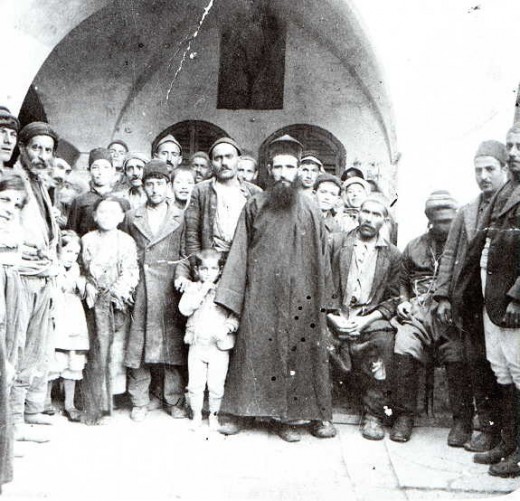
The Young Turks and the Armenians (1915-1918, 1,500,000 dead)
For over three centuries there existed an Armenian community in Asia Minor. This community was invaded by the Ottoman Empire in the 16th century, which ruled over all of Southern Europe, North Africa and the Middle East. When the empire fell, it was left with just the Christian Armenians and the Arabs of the Middle East. At the turn of the 20th century the ruling Young Turks officially recognized the constitutional government of Armenia and guaranteed their basic rights. However, a new leadership among the Young Turks endeavored to expand their borders to create a new empire called Turan and the Armenian homeland is in the way of this plan. When the first world war broke out in 1914, the Turks put into action a plan to annex the Armenian land through the annihilation of its entire population.
A coded telegram was sent to all provincial governors throughout Turkey with instructions to exterminate the Armenians. The men were tied together with ropes by death squads, brought to the outskirts of the towns and shot or bayoneted. The locals would join in on the massacre with knives and other implements. The women, elderly and children were herded to the Syrian desert under the pretext of relocation and left there to die. These death marches went for hundreds of miles and lasted for months with over a million Armenians. Stragglers hiding in the towns were dealt with by a group of criminals called “Special Organization” in any which way they wish.
With no food and water the countryside became littered with corpses and this sight was witnessed by foreign missionaries who recounted what they've witnessed to the rest of the world. At the end of the war in 1918 the Armenians with the help of the newly established moderate regime in Turkey demanded the repatriation of the Young Turk leadership responsible for the genocide, who were living in exile in Germany. When this request was turned down the Armenians took matters into their own hands by seeking out and assassinating these leaders.
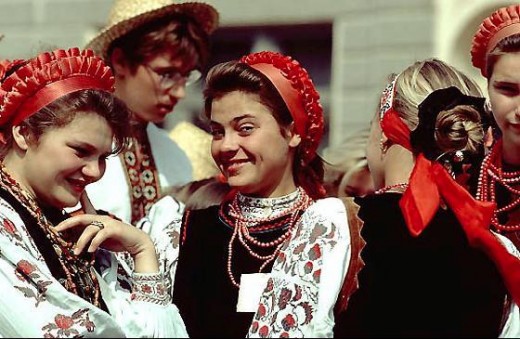
Man-Made Famine in the Soviet Union (1932-1933, 7,000,000 dead)
The perpetrator is Soviet leader Joseph Stalin, the target is the entire Ukrainian race, particularly the Kulaks, or wealthy farmers owning 24 or more acres, and employing farm workers. Stalin led his government to believe that the Kulaks would be at the forefront of any future insurrection and so he proclaimed a policy aimed at destroying the class. The Kulaks were stripped of everything they owned and it became a crime to aid these dispossessed people. A huge portion of this class were taken to special settlements in Siberia, while others became slaves in Soviet-run factories and other industrial projects.
Stalin then imposed the system of land management called collectivization or the government's seizure of all privately owned lands and livestock. When opposition persisted, Stalin raised the nation's export quota on food produce in the Ukraine resulting to mass starvation as there was simply no food left to feed them. He then sealed off the borders of the Ukraine preventing food supplies from entering the country. All food was considered as sacred property of the government and so the famine grew worse.
There were accounts of mothers in the countryside tossing their children onto passing trains in the hope that someone would take pity and care of them. In the cities, most of the people from the countryside flocked hoping to be fed only to drop dead in the streets, their bodies carted away in horse-drawn wagons and dumped in mass graves. People lying on the sidewalk who were thought to be dead, but were just too weakened by hunger were also carted away and buried. Desperate Ukrainians ate everything and anything from leaves off bushes and trees, dogs, cats, frogs, mice and birds. Others, gone mad with hunger, resorted to eating their own children. By the spring of 1933, at the height of the famine, it was believed that 25,000 persons died every day. The official stand of the Soviet government on the question of the famine is denial, anyone claiming it exists are enemies of the government and the use of the words famine or hunger is forbidden.
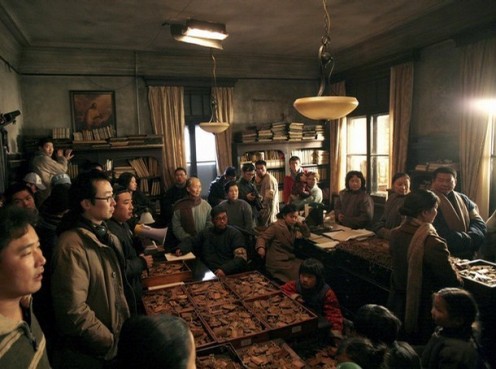
Rape of Nanking (1937-1938, 300,000 dead)
Fewer people know about what the Chinese call “the other holocaust” or “the forgotten holocaust”. They were referring to the Japanese occupation of China's capital city of Nanking. When the invasion began, about half a million people were trapped in the city and fell prey to Japanese soldiers acting on orders to kill every single Chinese in sight. The weapons of choice were the machete, guns and bayonets. The men were rounded up and shot, stabbed or hacked to death, the women were turned into sex slaves then killed as well, medical experiments were performed without anesthesia, prisoners were amputated and frozen alive and epidemics were unleashed for germ-warfare experiments. Competitions were encouraged with prizes for soldiers who were able to kill the most number of people. The savagery was deliberate as military leaders egged young Japanese soldiers to inflict maximum pain and suffering upon prisoners as a way of toughening up for future battles, and to erase all notions of mercy.
Of all the recorded genocides in history, this received the least international attention as the US and Great Britain were busy in the European war theater and most other countries just found the stories about atrocities in Nanking too outrageous to be believed. Within the walls of the city though, there was an extraordinary group of about 20 Americans and Europeans who became the unsung heroes in all this madness. The group is made up of missionaries, doctors and businessmen, who took it upon themselves to establish an International Safety Zone. They used Red Cross flags and declared a 2.5 square-mile area in the middle of the city off limits to the Japanese. Working day and night to the point of exhaustion they sometimes risked their lives by coming between the Japanese soldiers to prevent further harm to the Chinese. Over 300,000 Chinese civilians took refuge inside their Safety Zone, those who did not make it to the zone perished.
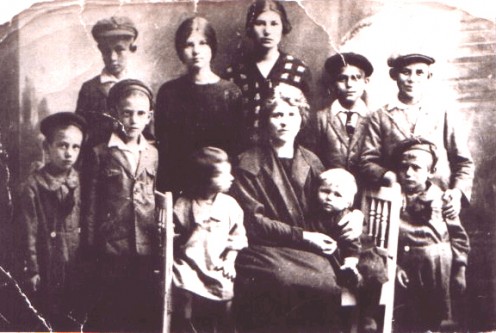
The Jewish Holocaust (1938-1945, 6,000,000 dead)
This is thankfully the most popular of all recorded genocides, I say thankfully because the whole world is aware of this historical blemish and are so affected by it, almost guaranteeing that a repeat will never occur (or so we thought). However, this genocide raged on for years unchecked and the range of brutality is still unequaled up to now. It is horrible in that it was such a conscious and systematic effort, with actual government policies enacted to ensure its success. The goal was the destruction of all Jews in Nazi occupied Europe, such a simple goal which even had a simpler means of implementation: death by slave labor or gassing. The Jews became Adolf Hitler's whipping boy, his excuse for invading European nations and enriching his beloved Germany.
The Night of Broken Glass or “Kristallnacht” marked the start of 8 years of genocide, the first state-run pogrom against the Jews was the Nazi retaliation for the death of a Nazi embassy official in Paris in the hands of the teenaged
Herschel Grynszpan. Grunszpan's parents were treated harshly by the Nazis. Ninety Jews perished that night, over 500 synagogues were burned to the ground and Jewish shops were looted and destroyed. The Nazis were just warming up for the Final Solution, where the Jews of Europe would all be deported Poland where the extermination camps were being constructed at Belzec, Sobibor,
Treblinka, and Auschwitz-Birkenau. Meticulous planning underlined the extermination process (with Germany at the forefront of the industrial revolution), certain mass production processes were adopted and there was an ever growing school of thought on how to exterminate all Jews in the quickest, most economical fashion. Perhaps the most efficient part of the process is tricking the Jews to believing that they need to be sanitized to prepare them for the work camps and so there was almost no resistance when they are sent to the “showers” to be gassed. In the ghettos of Poland, Jews were told they were being transferred to work camps too so they went willingly hoping for better living conditions. They were then loaded into unheated, unventilated trains with no food, water or sanitation. Many die long before reaching their destination and those who survive go through a selection process conducted by SS doctors. Those considered fit for slave labor were transported to work camps and everyone else ended at the gas chambers. A few inmates, especially twin children, were set aside for medical experiments. Twins are the favorite subjects of Josef Mengele, also known as the Angel of Death.
At the time of Hitler's death in April 30, 1945 most of Europe's Jews had perished. An estimated four million died at the death camps, another two million had been shot or died in the ghettos. Then began the daunting task of sorting through the genocide to find out exactly who was to blame. The Nuremberg Trials succeeded in sentencing 22 surviving Nazis officials with crimes against humanity.
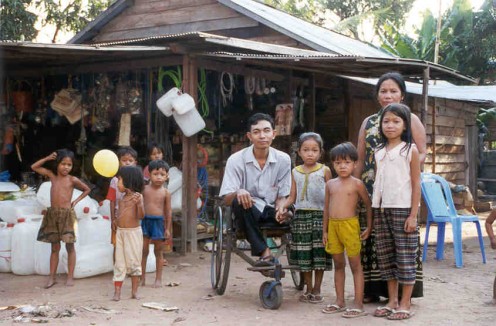
The Killing Fields of Cambodia (1975-1979, 2,000,000 dead)
Khmer Rouge leader Pol Pot succeeded in killing two million Cambodians in pursuit of his goal of building a Communist peasant farming state. His revolution began with the establishment of the Democratic Republic of Kampuchea. He declared that the beginning of his rule will be marked as year zero and will signal the start of social purification. He expelled all non-Kampucheans, closed all embassies and refused all forms of foreign assistance. Throughout the country, purges were conducted to eliminate the residue of the "old society". This meant the educated, the wealthy, Buddhist monks, police, doctors, lawyers, teachers, and former government officials. Soldiers of the former regime were killed along with families. A party slogan went to say, "What is rotten must be removed,".
The methods he chose for his revolution were naive, brutal and inept. In 1976 he introduced a Four Year Plan that sought to triple the country's agricultural production within a year without fertilizer, modern tools or material incentives. The plan did not consider Cambodian geography or common sense. Farmers were forced to meet impossible quotas as Khmer Rouge workers cut back the grain allotted for consumption. Hundreds of thousands either starved to death, collapsed from exhaustion or died of sickness with the absence of medical care. Another target of the genocide were the ethnic minorities, especially the three largest minorities; the Vietnamese, Chinese, and Cham Muslims. Fifty percent of the estimated 425,000 Chinese living in Cambodia in 1975 perished. Muslims were forced to eat pork and were killed when they refused.
In 1978 the Vietnamese government overrun the Khmer Rouge, the capital Phnom Penh was snatched from Pol Pot. He died in the Cambodian jungles in 1998 before he was even brought to trial. “We were like babies learning to walk,” was how he described his “mistakes” as he called them.
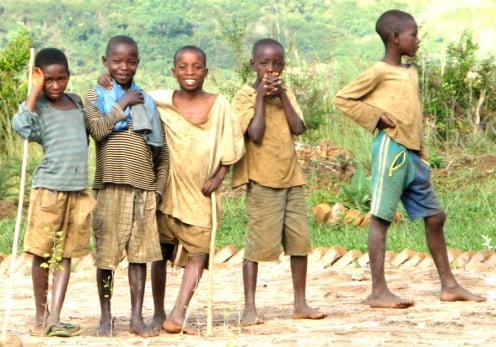
Ethnic War in Rwanda (1994, 800,000 dead)
The number of deaths in the shortest span of time (April to July) and the smallest land area is a record of sorts for the genocide in Rwanda. The socio-political conditions in the country was a genocide waiting to happen. While 90% of the population are Hutus, they were ruled by the aristocratic group of Tutsis for decades under Belgian colonial protectorate. When the Belgians turned the government over to the Rwandans, the Hutus seized power, but Tutsi rebels were able to push for shared-power and a fragile peace was achieved.
In 1994, Rwandan President Juvenal Habyalimana and Burundi's new President, Cyprien Ntaryamira, commenced peace meetings with the Tutsi rebels. On April 6, the jet carrying the two presidents was shot down by ground missiles as it approached Rwanda's airport in Kigali. Their deaths were seized by Hutu extremists as the excuse for beginning the genocide, starting with Tutsi figures who were already on their death-lists and some moderate Hutu politicians.
The killings spread like wildfire throughout the country and targeted all Tutsis. Armed with machetes, clubs, guns and grenades the Hutus killed indiscriminately. During the colonial days, all Rwandans carried identification cards specifying their ethnic background, these 'tribal cards' spelled the difference between living and dying. An insignificant number of U.N. peacekeeping forces were overwhelmed by terrified Tutsis seeking protection and when ten of theese peacekeepers were tortured and murdered by the Hutus, the United States, France, Belgium, and Italy all started evacuating their personnel from Rwanda.
At the U.N headquarters in New York, officials turned a blind eye on the killings, which were categorized as a mere breakdown in the cease-fire between the Tutsi and Hutu. Both the UN and the US did not assess the situation as genocide probably because this would need some sort of emergency intervention, even as the Red Cross claimed that the rate of killing is alarmingly extraordinary. To add to the Tutsis' plight, the U.N. Security Council voted unanimously to abandon Rwanda cutting down the size of military presence to about 200 soldiers.
The Hutu, feeling licensed by the lack of international intervention, escalated their genocidal mania. The Hutu-controlled Rwandan state radio, urged the Hutus to participate in the killings by broadcasting propaganda and revealing the locations of the hiding Tutsis. In local villages, the Hutus were forced to kill their Tutsi neighbors or face a death sentence for themselves and their entire families. By mid May, over 500,000 Tutsis had been slaughtered. Lifeless bodies were everywhere and a considerable number of them are seen floating down the Kigara River into Lake Victoria. Tutsi rebels from neighboring countries managed to put a stop to the killings in July 1994, by then, a tenth of the nation's had died.
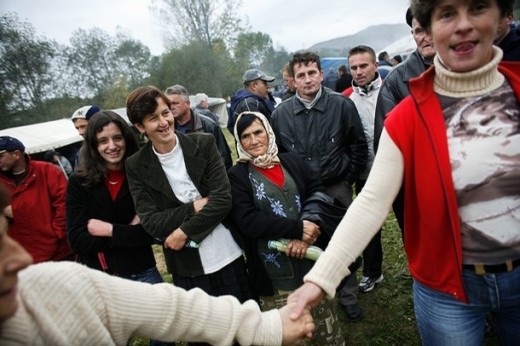
Ethnic Cleansing in Bosnia-Herzegovina (1992-1995, 2,000,000 dead)
Bosnia is an emergent nation from the former Yugoslavia formed by strongman Josip Tito (along with Slovenia, Croatia, Serbia, Montenegro and Macedonia). The Yugoslav territory was dominated by three major ethnic groups, the Serbs who are Orthodox Christians, the Catholic Croats and the Muslim Albanians. The death of Tito plunged Yugoslavia into political and economic turmoil, the new leader, the Serbian Slobodan Milosevic failed to hold Yugoslavia together. In 1991 Slovenia and Croatia both immediately declared independence resulting to civil war, with Slovenia emerging victorious and Croatia securing sovereignty through a cease-fire agreement brokered by the U.S. Seeing the moderate success of the efforts to break away from Yugoslavia, Bosnia declared independence in 1992 and earned recognition from the US and the European community. Milosevic's response to this declaration was to attack the Bosnian capital of Sarajevo. The city would become known for Serb snipers who shot helpless civilians in the streets, including over 3,500 children.
The Serbs then began systematically rounding up local Muslims, in scenes eerily similar to the Jewish holocaust. There were mass shootings, forced relocations, and imprisonment in concentration camps for men and boys. Massive sexual crimes were committed against women and girls. Superficial intervention was made by the UN and the world community, through economic sanctions and military deployment in food and medicine distribution centers for the dispossessed Muslims, but not military interference in the genocide that is well underway. The situation finally gained international attention when a Serb mortal shell struck a market in Sarajevo instantly killing 68 people and wounding 200 others. U.S. President Bill Clinton issued an order through the NATO for Serbia to cease its attacks on Bosnia and a shaky ceasefire ensued. This enabled peace-keeping forces to establish Safe Havens across the country.
These Safe Havens were then targeted by the Serbs next. In retaliation to U.N. limited air strikes, the Serbs held hundreds of UN peace-keepers hostage. The hostages became human shields as they were chained to potential targets like ammunition dumps. In the town of Srebrenica, one of the Safe Havens, peace-keepers stood by helplessly as the Serbs selected and slaughtered over 8,000 men and boys, in what will be known as the single worst genocidal act of the four-year conflict. In response, U.N. and NATO military intervention were carried out in earnest and soon enough Milosevic was prepared to talk peace.








